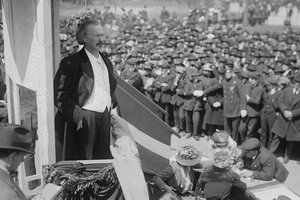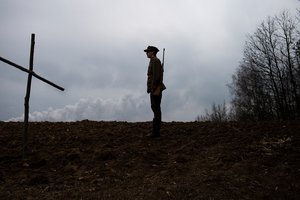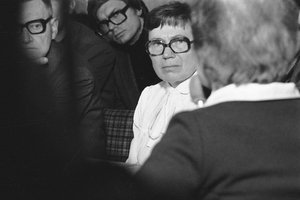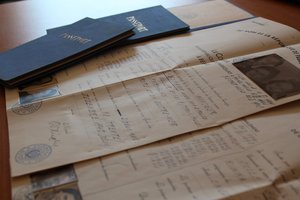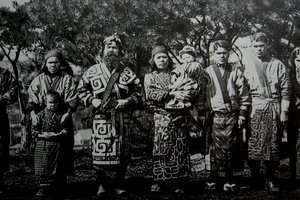Just Strong. About Ryszard Kukliński
It's been 15 years since Ryszard Kukliński died. As a colonel of the Polish People’s Army, he began, on his own initiative, cooperation with US intelligence services. In fear of a potential military conflict in Europe, he revealed to Americans tens of thousands secret plans drafted by the Warsaw Pact, including a plan of attack against NATO allies. Shortly before the martial law was declared in Poland, the CIA evacuated Kukliński together with his wife and two sons to the United States due to the threat of unmasking.
Ryszard Kukliński was born on 13 June 1930 in Warsaw. His father was a worker, a member of the Polish Socialist Party and a secret military organisation, “Miecz i Pług” [“Sword and Plough”]. On 13 May 1943 he was arrested for conspiracy and sent to a Nazi German concentration camp – Sachsenhausen. Ryszard was deported to the Reich together with his mother.
After the war, he joined the Polish Workers’ Party and on 1 October 1947 he started his education in Infantry Officers School No. 1. In 1950, as a result of being accused of affiliation with, among others, the Home Army, he was expelled from the school and referred to basic military service. In less than two weeks, however, the decision was withdrawn. Kukliński graduated, became a warrant officer (chorąży) and started his career in the Polish army.
General Staff
This intelligent and hard-working fellow, as emphasised by anyone who met him, took up service at the General Staff in 1963, where he quickly became the head of operative leadership and the head of strategic and defence planning department. Not much later he became involved in Polish counterintelligence and military intelligence. As early as in the winter of 1964/65, as he later recalled, he had an opportunity to see nuclear weapon warheads, which were not officially present within the territory of Poland. Since then, he was the organizer of the biggest military drills of the Polish army held by the head of the General Staff or the minister of defence with the participation of allied armies.
In 1968, as a staff officer, he took part in drafting the plans of the invasion of the Warsaw Pact's army on Czechoslovakia, while in 1970s he was a secretary of the Polish delegation during the Pact's meetings, where he became acquainted with the details of the planned major nuclear offensive by Soviets targeted at the West. As he recalled, he himself drew on the maps the mushroom clouds of the expected nuclear and hydrogen counter-attacks by the NATO along the Vistula river.
Alias: Seagull and Jack Strong
Kukliński claimed that he made his decision on cooperating with Americans after becoming aware of details of the Warsaw Pact's plans concerning the attack against NATO member states. He was also affected by the events in Prague in 1968 and in the north of Poland in 1970, where militia and military forces were sent against workers who went on strike, which caused 50 deaths at both sides, and over 1,200 people were injured. Kukliński distanced himself from the system that he had been creating, knowingly and full-heartedly, since his young years. Instead of rejecting it, however, he decided to fight against it from the inside by using possibilities that he had due to his position and expertise.
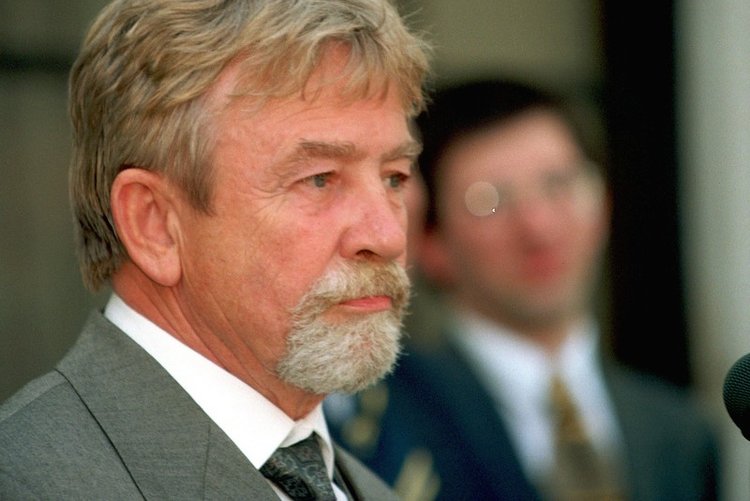 His first meeting with CIA agents took place in August 1972. On 17 December he provided source materials. It was not disclosed which documents precisely were provided to the CIA in 1971–1981, which is why we do not know whether they concerned only Polish matters or also the plans of the Soviet Union, which was reluctant to providing access to its secrets to any representatives of “brotherly nations”. Even though involved in preparing drills, Kukliński presumably did not have access to strategic and operational materials of the Warsaw Pact's staff. Typically enough, the military maps preserved and stored in the Institute of National Remembrance show only the movements of the Polish army, which in case of invasion against the West was supposed to get as far as to Rotterdam and the English Channel. This means that the Polish army knew only its own tasks, and the same was true for other states of the Eastern Bloc. The map of all fronts remains a secret of Kremlin archives to this day, but this does not undermine in any way whatsoever the role played by Kukliński.
His first meeting with CIA agents took place in August 1972. On 17 December he provided source materials. It was not disclosed which documents precisely were provided to the CIA in 1971–1981, which is why we do not know whether they concerned only Polish matters or also the plans of the Soviet Union, which was reluctant to providing access to its secrets to any representatives of “brotherly nations”. Even though involved in preparing drills, Kukliński presumably did not have access to strategic and operational materials of the Warsaw Pact's staff. Typically enough, the military maps preserved and stored in the Institute of National Remembrance show only the movements of the Polish army, which in case of invasion against the West was supposed to get as far as to Rotterdam and the English Channel. This means that the Polish army knew only its own tasks, and the same was true for other states of the Eastern Bloc. The map of all fronts remains a secret of Kremlin archives to this day, but this does not undermine in any way whatsoever the role played by Kukliński.
Zbigniew Brzezinski, National Security Adviser to US President Jimmy Carter, who had a perfect knowledge of Ryszard Kukliński's case, stated: ‘Colonel Kukliński was not an ordinary US intelligence agent. He was a brave ally of the United States in times when the entire leadership of the Polish Army was sold to the Soviets. He was the first Polish officer in the North Atlantic Treaty Organization and the initiator of secret cooperation between the Polish Army and the Army of the United States. As he risked his own life and the life of his family, he deserves recognition for his decent service to Poland”. He also added that thanks to Kukliński's experience and expertise, the American intelligence had learned how to verify the reliability of materials and avoid false intelligence information provided by sources located in Moscow.
America, America
In the autumn of 1981 the loop around Kukliński started getting tighter and tighter. The authorities discovered that the leak which was earlier believed to originate in the Ministry of Interior was in fact in the General Staff. Kukliński knew that he was in a circle of suspects, which is why he requested that the CIA evacuated him and his family. On 8 November 1981, a month before the martial law was declared in Poland, which he tipped off American agents about, Kukliński failed to appear at work. He and his close ones were already on their way to the United States.
After getting there, they were taken care of by the FBI, which meant having their identities changed and changing places frequently. The information about martial law provided by Kukliński to CIA agents proved correct as early as on 13 December. The family learned English and Ryszard started working for the Pentagon as a Warsaw Pact specialist. In 1986, he was the first one to be granted American citizenship under the newly adopted act on the merit-based citizenship.
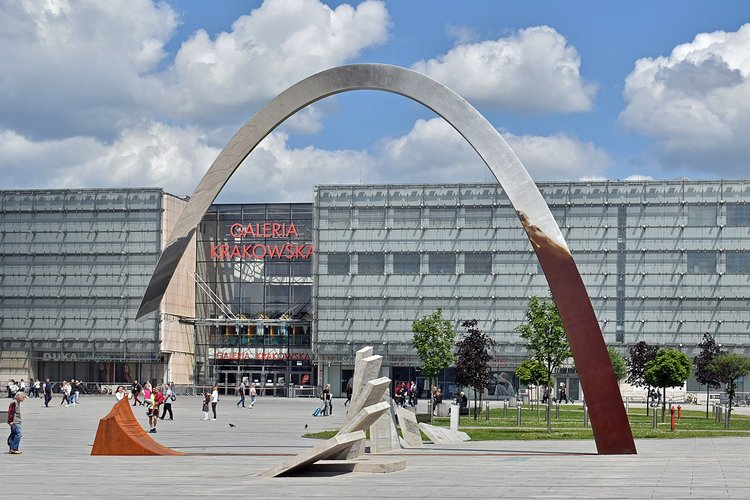 At the same time in Warsaw there was no purge and nobody among the Staff suffered any consequences, which in the future would spark imagination and raise controversies among the enemies of Kukliński. The most reasonable explanation, however, is that General Wojciech Jaruzelski gave up on an internal investigation, being aware that it is not advisable to get rid of experienced colleagues on the last straight before martial law.
At the same time in Warsaw there was no purge and nobody among the Staff suffered any consequences, which in the future would spark imagination and raise controversies among the enemies of Kukliński. The most reasonable explanation, however, is that General Wojciech Jaruzelski gave up on an internal investigation, being aware that it is not advisable to get rid of experienced colleagues on the last straight before martial law.
Especially since Americans did not use the story of Kukliński for propaganda, and the case was fully revealed only in 1986, when the Washington Post described it after being persuaded to do so by Jerzy Urban, the spokesman for the government of the Polish People's Republic. During a press conference, Urban thundered and accused the United States of cynicism in that having had information on the planned martial law they did nothing to avert it or to warn “Solidarity” activists. A half year later Kukliński himself responded to these accusations by giving an interview for the Paris-based Kultura [Culture], which was a magazine of the Polish emigrant opposition. Earlier in 1984, without any solid evidence of Kukliński's cooperation with intelligence services, the Warsaw Military District Court passed a default judgment and sentenced him to death.
Colonel's rehabilitation
‘Kukliński will have his proper place in the history. I strongly believe so. He will fascinate historians and columnists, any people, he will be discussed in the future and, ultimately, he will be universally acknowledged as a hero. I am convinced that in a long-term perspective he will win’; stated Jan Nowak-Jeziorański, the head of Radio Free Europe's Polish section, who recognised Kukliński as one of the most outstanding national heroes of the contemporary Poland. Controversies related to choices he made were not over after the transformation of 1989, and the sentence against him was overturned only in 1995.
In 1996, the Minister for Defence restored him to the rank of colonel, and two years later he was granted the honorary citizenship of Krakow. During the special session of the City Council he said: “I perceived your decision as a very clear-cut, firm and effective voice advocating for restoring my honour and good name which were taken from me. Your invitation to Krakow proved to be a happy invitation to the Homeland”.
Ryszard Kukliński died on 11 February 2004 in the United States, after having mourned his wife and both sons who died in tragic circumstances. In 2016, the President of the Republic of Poland promoted Kukliński to the rank of brigadier general, and on 4 June 2018 his monument was unveiled near the Railway Station in Krakow. It is no coincidence that the monument is situated on the square named after Jan Nowak-Jeziorański. Kukliński's body was brought back to Poland. He was buried in the Honor Lane (Aleja Zasłużonych) at the Powązki Military Cemetery in Warsaw.
Poland.pl
Watch the interview with the former CIA officers about "Jack Strong" – Ryszard Kukliński. Source: Institute of National Remembrance.
08.02.2019



